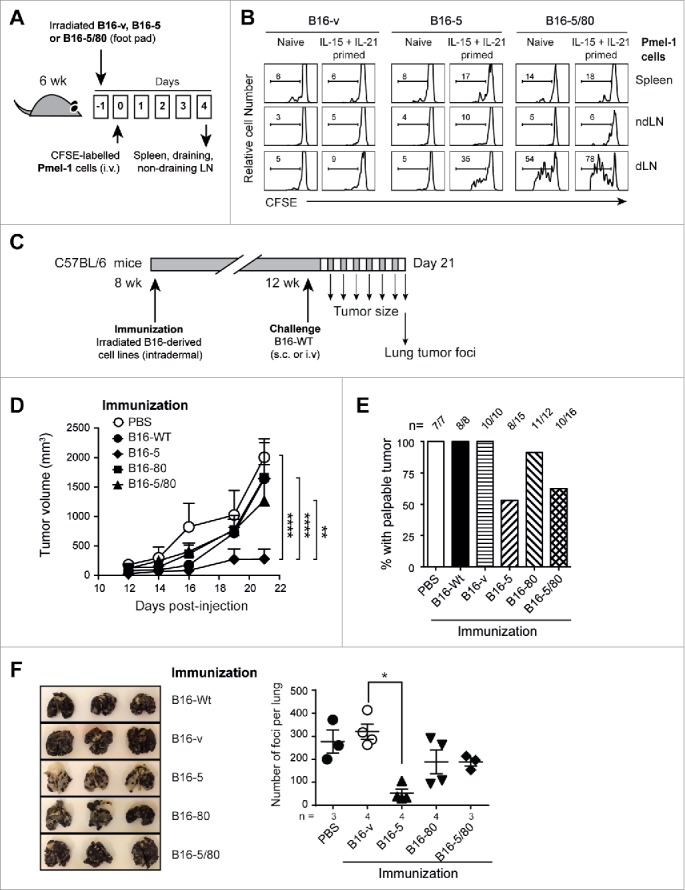Figure 6.

NLRC5 expression in B16 cells enables cross-presentation of endogenous mgp100 and elicits protective antitumor immunity. (A) Experimental plan for evaluating antigen cross-presentation in vivo. B16-v, B16-5 and B16-5/80 cells were irradiated and 2 × 105 cells were injected into the footpad of C57BL/6 mice. One day later, CFSE-labeled naive or cytokine-primed Pmel-1 cells were injected intravenously (1 × 106 cells/mouse). Four days later, lymph nodes (LN) draining the footpad (popliteal), non-draining (contralateral popliteal) LN and spleen were harvested to evaluate CFSE fluorescence on CD8+Vβ13+ gated of Pmel-1 cells. (B) Proliferation of Pmel-1 cells elicited by cross presentation of endogenous mgp100 by B16-derived cells. Representative data from three–four mice per group from two experiments are shown. (C) Protocol for evaluating the ability of B16-derived cells to elicit protective antitumor immunity. (D, E) Eight week-old C57BL/6 mice were immunized with irradiated B16-derived cell lines (○ PBS; • B16-Wt; ♦ B16-5, ▪ B16-80; ▴ B16-5/80) by intradermal route (2 × 105 cells/mouse). Four weeks later, the immunized mice were challenged with parental B16-F10 (B16-Wt) cells injected subcutaneously (1 × 105 cells/mouse), and tumor growth was monitored. (D) Tumor growth kinetics from two experiments (n=4–6 mice per group). Error bars = SE. Statistical comparisons were performed using two-way ANOVA with Tukey's multiple comparisons. **p < 0.01, ****p < 0.001. (E) Pooled end-point data of palpable tumor growth 21 d after challenge from the indicated number of mice from more than three experiments. (F) C57BL/6 mice immunized with irradiated B16-derived cell lines were challenged with parental B16-Wt cells via intravenous route. Twenty days later, the recipient mice were sacrificed and the lung tumor foci were evaluated. Representative images of the lungs (left) and number of lung tumor foci (right) are shown. Kruskal–Wallis test adjusted for Dunn's multiple comparisons: *p < 0.05.
